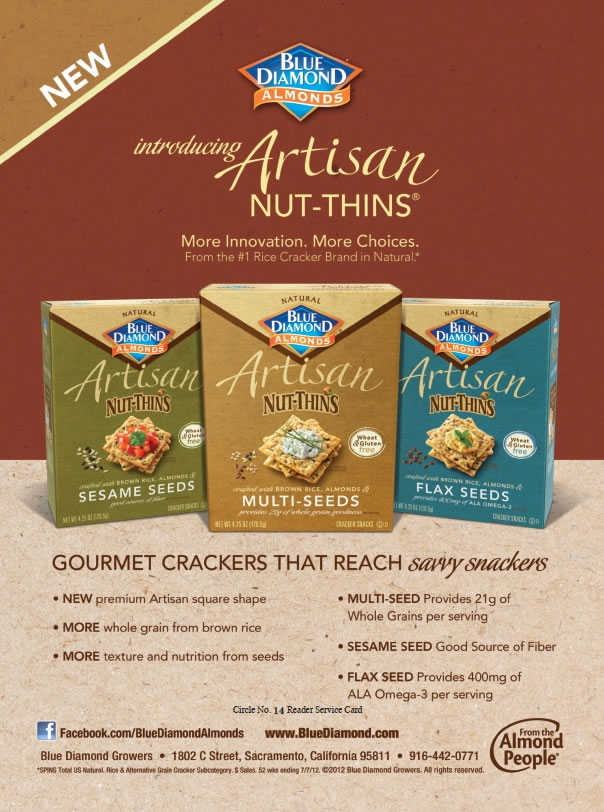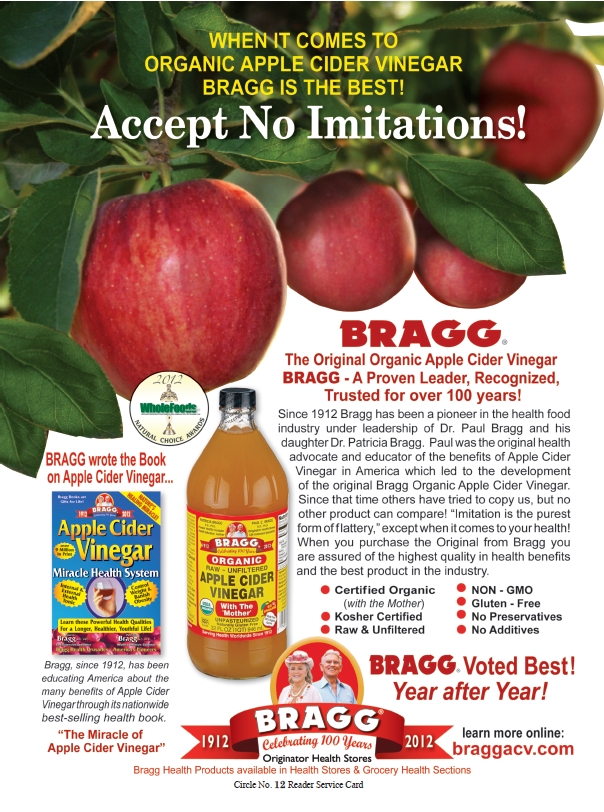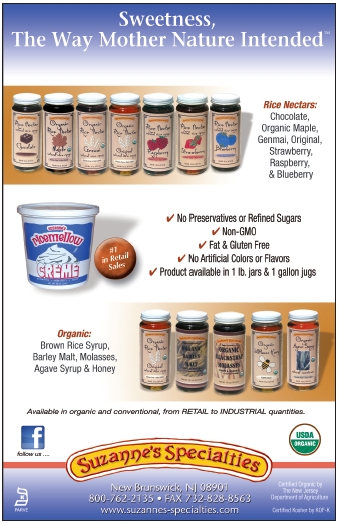In 1980, you couldn’t find yogurt in a supermarket. By the early 1990s, Peter Roy and John Mackey of Austin, TX-based Whole Foods Markets were “rolling up” the largest independent natural products retailers around the U.S. to form the first national chain of “supernatural” supermarkets. By the 2000s, every conventional supermarket of any size was carrying not only yogurt, but also all natural foods categories and capturing significant natural market share.
From Small to Large—to Small
All the while, Whole Foods Markets was testing the upper limits of size. While conventional supermarkets have traditionally averaged 45,000 square feet, in the early 1990s, it was a shock to see a natural products start-up, Fresh Fields, open the first 20,000-square-foot natural products supermarket in Rockville, MD. By the mid-2000s, Whole Foods Markets had blown this benchmark away, peaking with the company’s 80,000-square-foot flagship store in Austin. The investment  community kept asking the question, “How high is up?” Mackey would answer that, as long as the stores continued to be successful, Whole Foods Markets would keep making them bigger.
community kept asking the question, “How high is up?” Mackey would answer that, as long as the stores continued to be successful, Whole Foods Markets would keep making them bigger.
Average leases for Whole Foods Markets’ newest stores in the mid-2000s were pushing 60,000 square feet. Enter the bursting of the real estate bubble and the financial markets crash of 2008. Today, Whole Foods Markets’ average new lease is closer to 35,000 square feet. But while Whole Foods was focusing on ever-bigger footprints, other operators were busy backfilling the vacuum left by the company in the 30,000-square-foot-and-under size range.
Southeastern U.S. natural chain Earth Fare, Southwestern chain Sprouts Farmers Markets, and Boulder, CO-based Sunflower Farmers Markets were finding plenty of opportunities in the 25,000-square-foot range. Combined, these up-and-coming supernatural retailers are fast-approaching 200 stores. (Sprouts acquired Sunflower in March of this year). Whole Foods Markets operates over 300 stores in the U.S. The logic that there are many more places to fit a 30,000-square-foot store than a 60,000-square-foot store is not lost on Whole Foods Markets, which says these smaller stores in smaller markets are what will help the company reach its goal of 1,000 stores.
 In July, Lakewood, CO-based Natural Grocers by Vitamin Cottage announced its intention to seek a $100-million initial public offering (IPO). The company, which currently has 55 stores, ranging in size from 5,000 to 14,000 square feet, sees a future that includes 1,100 U.S. locations, probably averaging 10,000 square feet. Natural Grocers’ product mix is centered on vitamins and supplements, but includes plenty of perishable foods in refrigerators and freezers, which will attract more frequent shopping trips and create a significant new challenge to smaller natural retailers.
In July, Lakewood, CO-based Natural Grocers by Vitamin Cottage announced its intention to seek a $100-million initial public offering (IPO). The company, which currently has 55 stores, ranging in size from 5,000 to 14,000 square feet, sees a future that includes 1,100 U.S. locations, probably averaging 10,000 square feet. Natural Grocers’ product mix is centered on vitamins and supplements, but includes plenty of perishable foods in refrigerators and freezers, which will attract more frequent shopping trips and create a significant new challenge to smaller natural retailers.
Fresh-Food Retailing Renaissance?
And that is just the “natural” sector. Add to this Greensboro, NC-based Fresh Market, which, while not a “pure play” naturals retailer, offers high-quality fresh foods in a very efficient 20,000-square-foot package. Fresh Market went public in 2010, and is planning to expand rapidly from its base of about 115 stores. While concentrated on the East Coast to this point, Fresh Market plans to launch stores in California this year. What makes this relatively small chain—by contrast, supermarket behemoth Kroger operates 2,425 stores in 31 states under 12 different banners—able to mount a national strategy? Its hyper-focus on quality fresh foods. If you want to buy a piece of meat from Fresh Market, you have to talk to an employee who, from behind the 40-foot meat case, will prepare the exact cut of meat you want if you don’t see it in the case. And, while the fresh produce isn’t organic—again, just top-quality conventional—it is easily the most beautiful presentation you’ll find anywhere in the country.
And as I write this column in early August, New York City-based Fairway Markets has just announced its plans to seek a confidential initial public offering, a new class of IPO for smaller companies that allows the withholding of financial details up to three weeks before the “roadshow” to market itself to investors. Fairway currently has 11 stores in the New York metropolitan area, also in the 25,000-square-foot range, with a focus on fresh, gourmet and natural. Several years ago in one of Fairway ’s stores, I counted 100 linear feet of organic produce case, which made up perhaps a quarter of the total produce department size. Vitamins? Stocked to the gills, deep and wide. Prices? Aggressive. Fairway was probably encouraged to seek its IPO now because of the stellar stock performance of Whole Foods Markets and Fresh Market this year, up 33% and 50%, respectively. While the rest of our economy is still struggling to pull itself out of the recession with any momentum, it’s a good time to be a—quality—fresh foods retailer.
’s stores, I counted 100 linear feet of organic produce case, which made up perhaps a quarter of the total produce department size. Vitamins? Stocked to the gills, deep and wide. Prices? Aggressive. Fairway was probably encouraged to seek its IPO now because of the stellar stock performance of Whole Foods Markets and Fresh Market this year, up 33% and 50%, respectively. While the rest of our economy is still struggling to pull itself out of the recession with any momentum, it’s a good time to be a—quality—fresh foods retailer.
Oh, and I’m not done yet. The United Kingdom’s Tesco, the world’s third-largest retailer, continues its push into the U.S. with its 10,000-square-foot Fresh & Easy stores, centered in the Southwestern U.S. Fresh & Easy is approaching 200 stores, with near-term plans for 300 stores, and several billion dollars in capital to fund its long-term U.S. strategy. The product mix also focuses on fresh produce and grab-’n-go meal solutions with an emphasis on price-point value. While Fresh & Easy is by no means a natural products store—the gondola shelving is filled with conventional dry food items—their prepared foods offerings are careful to avoid “bad” ingredients such as colorings, preservatives and hydrogenated oils, and will pass muster for quality with all but the most discriminating organic purist.
Coming Soon to a Theater Near You
This growth in fresh food stores is made possible by soaring demand from U.S. households. My takeaway is, from 10,000 square feet to 30,000 square feet—what I am calling the 20,000-square-foot “field of play”—the opportunity is ripe for fresh-format, high-quality food stores; with or without vitamins and supplements, and with or without an exclusive focus on natural and organic. This turf will become crowded with potentially thousands of new natural and natural/conventional hybrid fresh foods st ores.
ores.
What this means for you, as an independent natural products retailer in a “B” or “C” market, is that you may be facing new competition sooner than you think. These lower-population-density trade areas, heretofore left uncontested by the chains, will be the emerging battleground. Now, we’ve seen this movie before, in the 1990s, when Whole Foods Markets was battling Wild Oats Markets (later acquired by Whole Foods Markets). Whole Foods Markets typically got the best real estate—meaning in trade areas with the highest household quality, the highest population density, and therefore, the highest natural products demand potential—while Wild Oats had to content itself with lesser markets.
But Whole Foods Markets also liked putting stores wherever Wild Oats put a store, with the result that the trade area—usually a “B” market—immediately became “overstored.” No competitor was happy with its results, as demand for food was too small to satisfy every player. We saw the independents in these markets suffer as collateral damage while the two supernatural chains fought it out. If you prepare wisely, however, I believe you can minimize the impact and even thrive against any new competitor.
Independents’ Playbook
I had an interesting conversation with a top-quality independent retailer the other day who told me, “Jay, every time we’ve invested in our store, sales have gone up.” Maintenance items like new floors, ceilings and lighting; replacement and upgrade items like refrigerators and freezers; and modest and disciplined expansion of the footprint of the store, were the investments that had paid strong returns to this independent retailer over the last 15 years.
As with competing against any large chain, relying on discounting is a losing strategy. The deeper pockets and bigger buying power of your competitor will always win. Shortening your margin can also make you unprofitable—or worse—in a hurry, severely limiting your ability to respond to a new competitive threat.
But, here are some things you can do:
1. Refresh your mission. If you are like most natural retailers, you started your store because you believe in the products and wanted to help others. Do you still? If you’ve become cynical, or have retreated into a defensive crouch and stopped servicing your customers with passion and commitment, you’d better think long and hard about continuing in this business. If you stay, rededicate yourself to serving.
2. Reinvest in your store. Check your tax returns. If the line item for “depreciation” is zero, you are underinvesting in your business. Invest and they will come.
3. Embrace local and personal. The value of “local” products has exceeded even organic. There’s probably no other food store in your community as truly local as you. Leverage this identity. People want to know the sources of their foods. The same applies to those who purvey the foods. Tell your story—the “who, how and why” of your store—as a perennial part of your marketing and advertising message.
The reason my independent retailer friend had called me was to  discuss opening his second store. Measured carefully, and put in the right place, the future looks bright. WF
discuss opening his second store. Measured carefully, and put in the right place, the future looks bright. WF
Jay Jacobowitz is president and founder of Retail Insights®, a professional consulting service for natural products retailers established in 1998, and creator of Natural Insights for Well Being®, a comprehensive marketing service designed especially for independent natural products retailers. With 35 years of wholesale and retail industry experience, Jay has assisted in developing over 1,000 successful natural products retail stores in the U.S. and abroad. Jay is a popular author, educator, and speaker, and is the merchandising editor of WholeFoods Magazine, for which he writes Merchandising Insights and Tip of the Month. Jay also serves the Natural Products Association in several capacities. He can be reached at (800)328-0855 or via e-mail at jay@retailinsights.com.
Published in WholeFoods Magazine, September 2012










